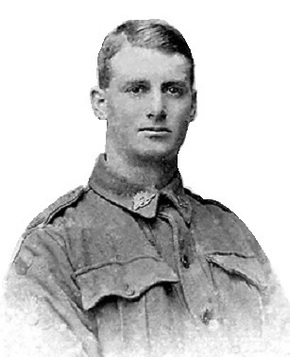CLARKE-KENNEDY, Kenneth George
| Service Number: | 1008 |
|---|---|
| Enlisted: | Not yet discovered |
| Last Rank: | Private |
| Last Unit: | 10th Light Horse Regiment |
| Born: | Not yet discovered |
| Home Town: | Not yet discovered |
| Schooling: | Not yet discovered |
| Occupation: | Not yet discovered |
| Memorials: | Cardwell Roll of Honour, Tully RSL Honor Roll |
World War 1 Service
| 25 Jun 1915: | Involvement Private, 1008, 10th Light Horse Regiment, --- :embarkation_roll: roll_number: '3' embarkation_place: Fremantle embarkation_ship: HMAT Karoola embarkation_ship_number: A63 public_note: '' | |
|---|---|---|
| 25 Jun 1915: | Embarked Private, 1008, 10th Light Horse Regiment, HMAT Karoola, Fremantle |
Clark-Kennedy K G
Kenneth George Clark-Kennedy.
Researched and Written by The Cardwell Historical Society Cardwell Queensland.
Kenneth George Clark-Kennedy was born at Cardwell (17 February 1889), enlisted soon after his brother Alan Gordon. His address when he joined on 28 January 1915 was “Fairview”, Cardwell, but he actually took his oath at Wagin, WA and was assigned to Black Boy Hill Camp (with regimental number 1008). After training he left Australia from Freemantle on 25 June 1915 with the 3rd Light Horse Brigade (10th Light Horse Regiment, 6th Reinforcements), the only Light Horse Regiment recruited in Western Australia during WW1. He joined his unit at Gallipoli, where the 3rd Light Horse also served dismounted, on 2 October 1915 but Kenneth was taken ill with diphtheria and sent to hospital on Malta. Here he remained from the end of November 1915 until deemed “fit for active service” on 13 February 1916.
After recovering, he served as a Gunner in Egypt with the 4th Division Artillery until embarking from Alexandria for Marseilles in June 1916. In France he was promoted to Bombardier (7 November 1916) in the 4th Trench Mortar Battery but sustained gun shot wounds to his right hand on 3 May 1917. After being wounded, he rejoined the unit in Belgium in early July and continued service in the field. Service records only specify “in the field” rather than stating what incidents a soldier was involved in, but Clark-Kennedy’s unit took part in several actions including Polygon Wood and Passchendaele (3rd Battle of Ypres). Passchendaele cost more than half a million lives over three months from July 31st: 36,500 were Australians; 90,000 British and Australian bodies were never identified; 42,000 bodies were never recovered because they were blown to bits or drowned in mud.
Ken Clark-Kennedy did duty with various artillery units including the 8th Medium Trench Mortar Battery and 4th Division Ammunition Column. At the close of the war he finally left from England to return to Australia in February 1919, on the Anchises, disembarking at Albany. He received similar medals to his brother and was discharged on 3 June 1919.
In July 1942, K. G. Clark-Kennedy was living in Wagga Wagga, NSW. He again served in the army in WW2 with service number was N204466. He died in 1951 at Manly, NSW, leaving the wife he married in 1940, Isabella Hall Clark-Kennedy, who died in 1966.
Submitted 28 December 2020 by Lynette Turner










